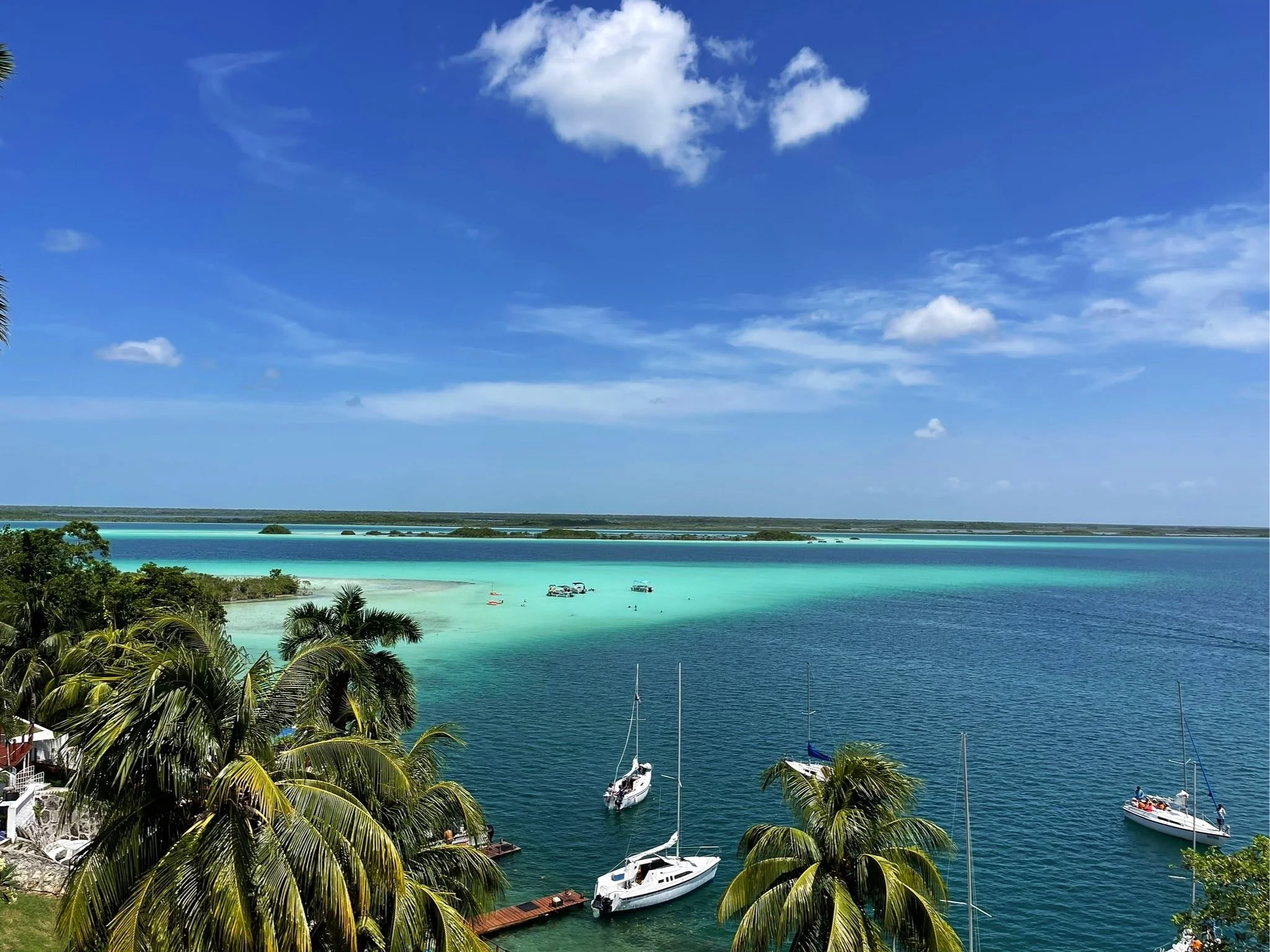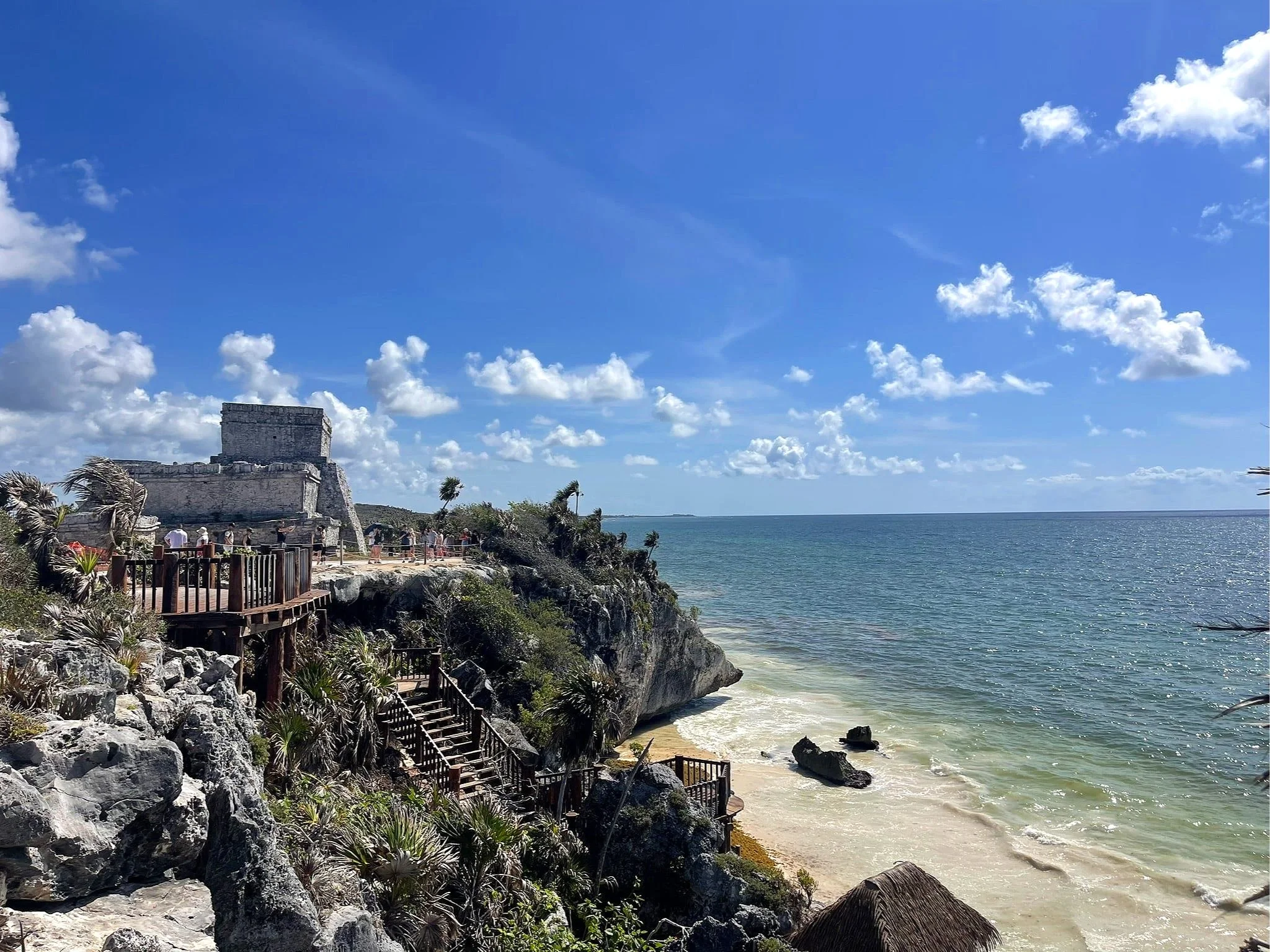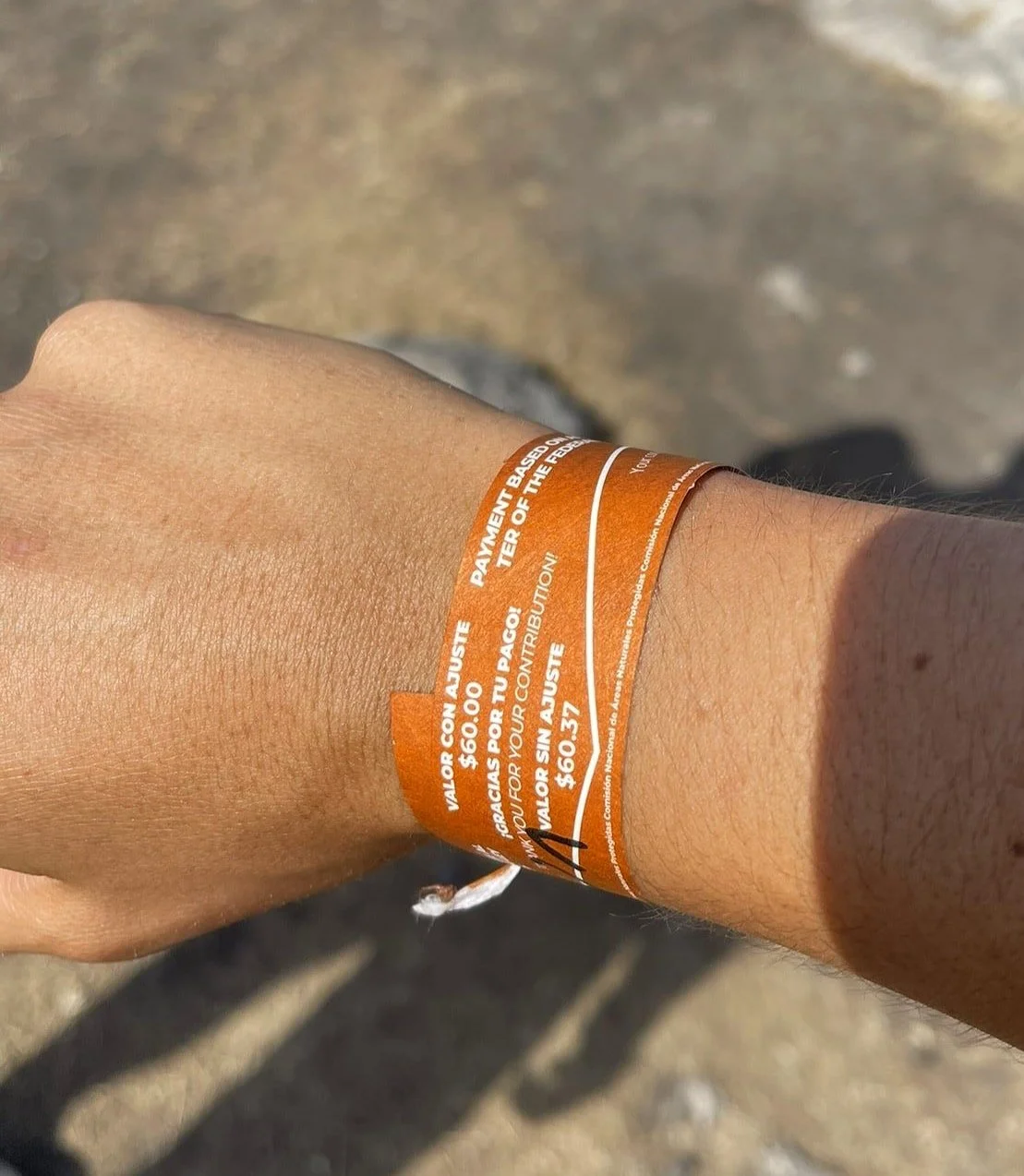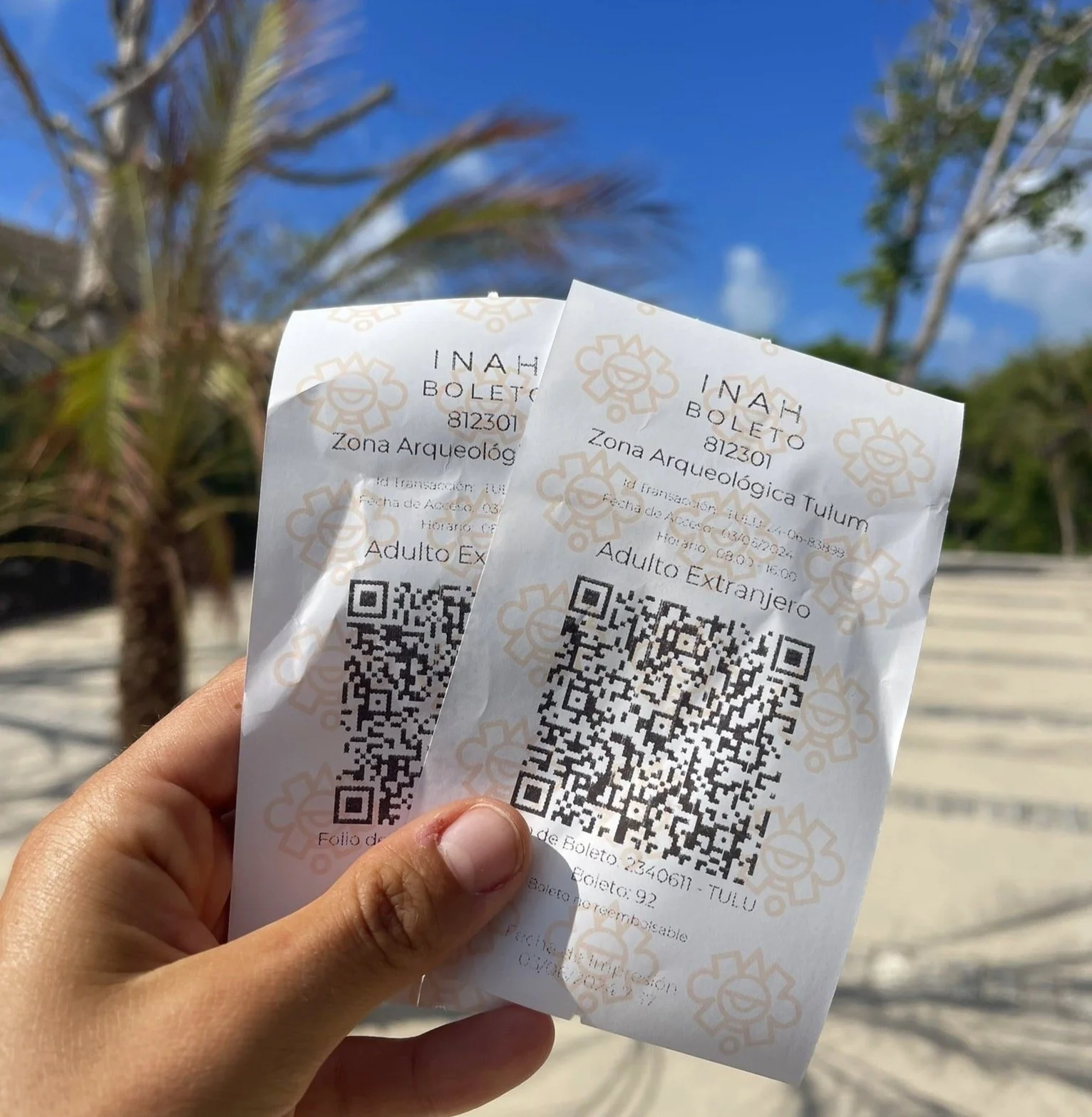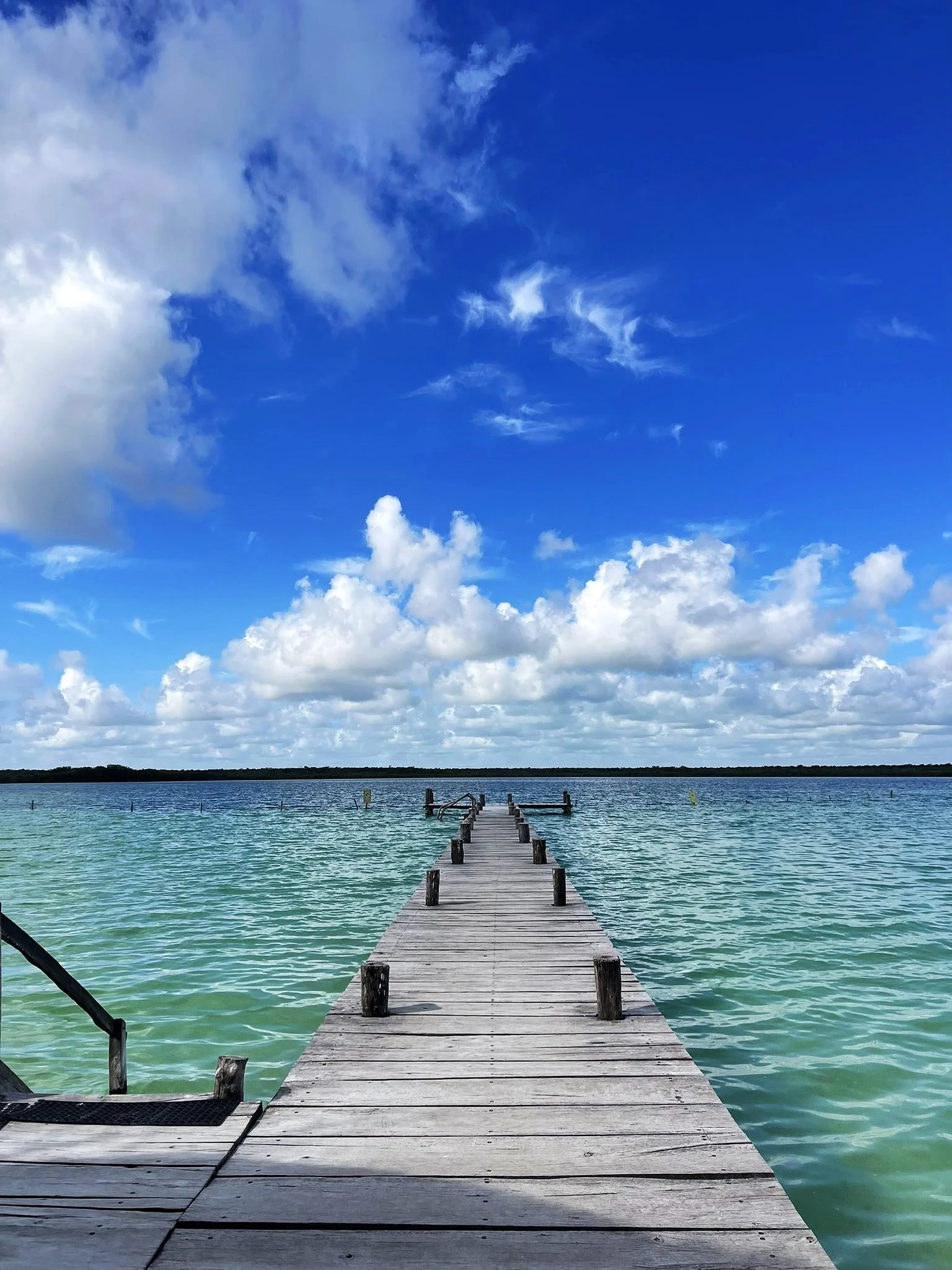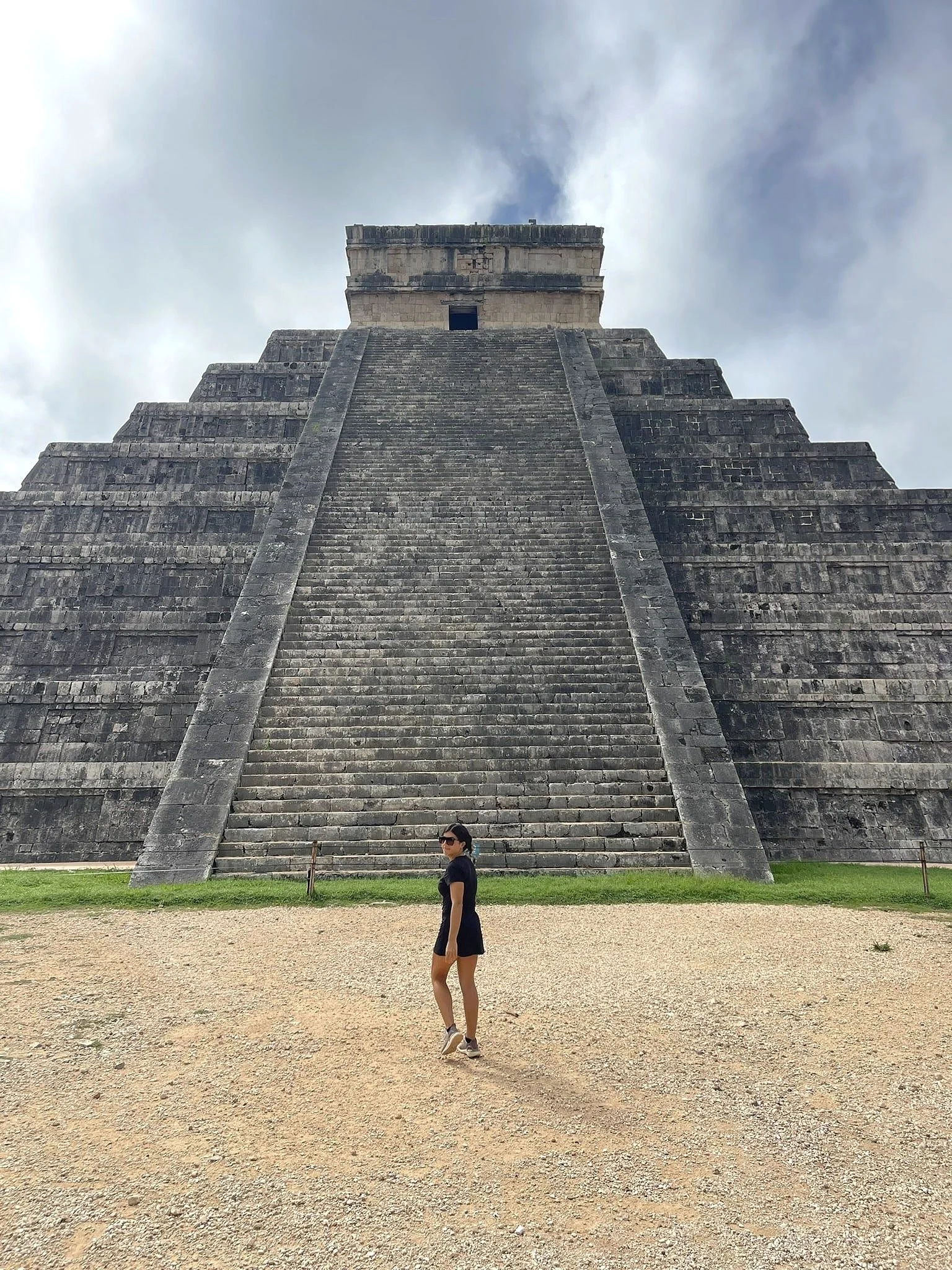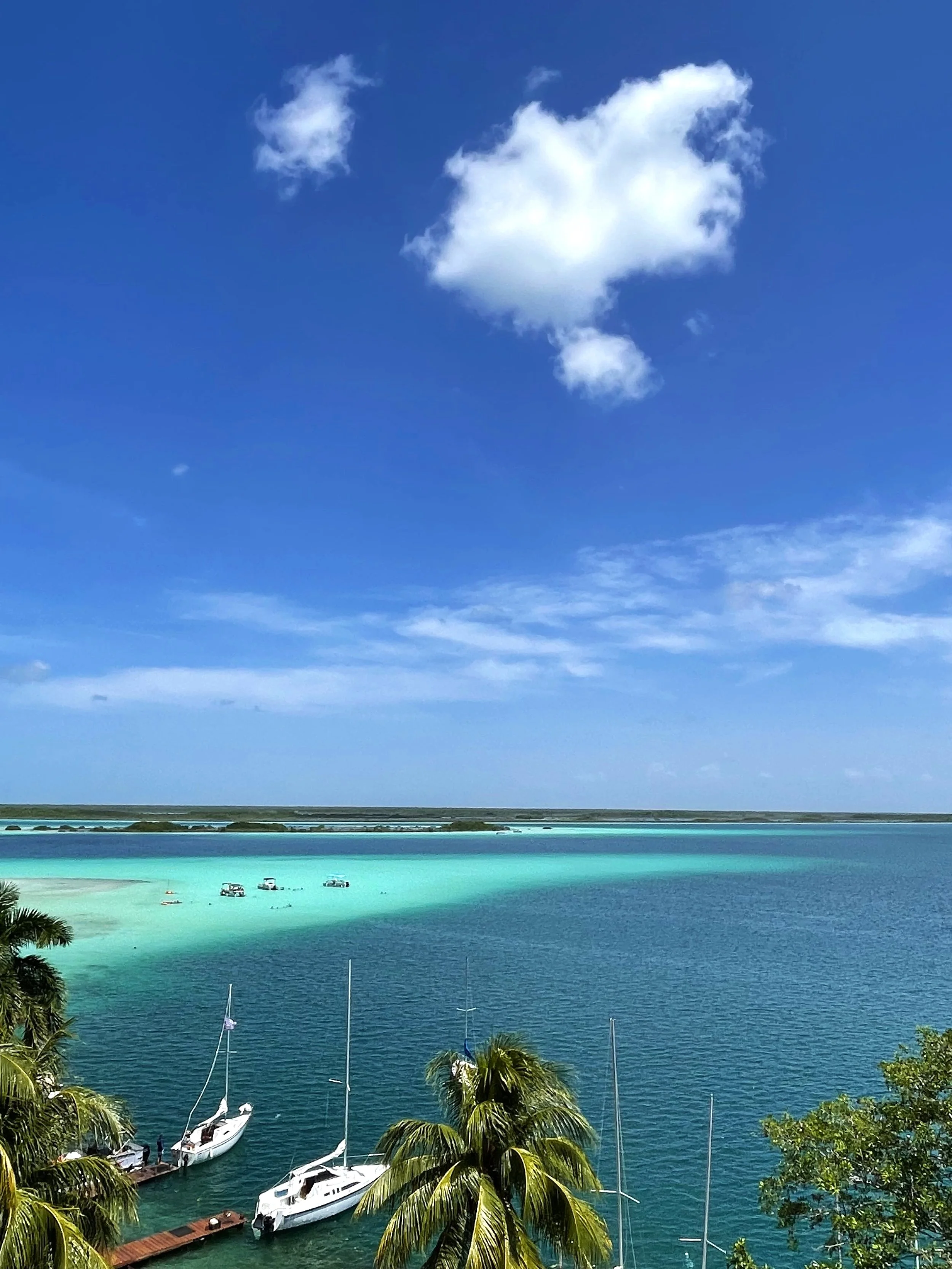The Top 8 Tulum Day Trips
Welcome to Tulum, a small but popular Mexican town with a jungle-like atmosphere that is renowned for its ancient Mayan ruins perched on a seaside cliff. Its central location in the Yucatan Peninsula makes it an ideal base for exploring several amazing destinations nearby. Whether you are interested in the serene, Maldive-blue waters of Bacalar, the incredible Chichen Itza, one of the New 7 Wonders of the World, or the colonial charm of Valladolid, this guide will highlight the perfect day trips from Tulum for you to enjoy during your stay!
Disclaimer: This post contains affiliate links. If you click through and make a purchase, my blog may receive a commission at no additional cost to you.
The Top 8 Tulum Day Trips
#1: Tulum Ruins
Tulum is renowned for its ancient Mayan ruins perched on a seaside cliff overlooking the Caribbean Sea. This popular tourist destination is the most visited archaeological site on the Yucatán Peninsula, making it a must-visit during your time here. Depending on how quickly and thoroughly you want to explore, you can see the ruins in 1-2 hours.
These ancient ruins are part of a Mayan city dating back to the 13th-15th centuries, which focused on maritime trade with other tribes throughout Mexico and Central America. This trade mainly consisted of obsidian alongside other important natural elements, facilitated by Tulum's coastal location. The ruins also played a significant role in spirituality and religion for the Mayans, providing a space to worship the sun, moon, and other gods, symbolizing essential natural elements.
The collapse of these Mayan ruins occurred over time for unknown reasons, but historians suggest it was due to a combination of factors, including disease, warfare, and poverty. To learn more about the potential reasons for the collapse, head here.
Fun Fact: The Yucatec Mayan word “Tulum” translates to “wall.” This was a fitting name for the city due to the great wall and the nearby reef that protected it from roaming pirates looking to steal their land.
Tulum Ruins Fees:
The entrance fee into the ruins is 95 pesos per person. You will be handed a receipt for this INAH ticket, which must be paid in cash.
You will pay another 60 pesos for the CONAP fee (protected area entrance fee) and the bracelet you must wear while visiting. This bracelet allows access to the ruins and the Tulum National Park area, including its nearby beaches. You can choose to pay with a card for this fee.
The parking fee is an additional 100 pesos. Be sure to drive down the ruins road as far as officials let you, where you will find the official Tulum Ruins parking on your right. This must be paid in cash.
Pro Tips:
Go early! The ruins get crowded as the day progresses, with tours arriving around 9:30 AM. I suggest going right when they open at 8:00 AM.
Try to skip Sundays if you want to avoid an even bigger crowd. On Sundays throughout Mexico, Mexican residents receive free entry to the majority of historical sites around Mexico.
Wear loose and comfortable attire. The ruins are spread out and mostly unshaded. This is another reason to go early: to avoid the heat.
Buy tickets only from the booths at the ruins. Do not purchase them from anywhere else.
Bring your reusable water bottle to stay hydrated. Plastic bottles are not allowed and will be confiscated.
Facilities: There are toilets in the ruins area.
Tour Guide: You do not necessarily need a tour guide to visit the ruins. There is plenty of signage around for you to read up on the history of the buildings and surrounding area. I did not hire a guide.
Beaches: The CONAP fee you paid for your bracelet grants you access for the day to the following beaches: Playa Santa Fe, Playa Pescadores, Playa Paraiso, and Playa Las Palmas. Be sure to take advantage of this and walk to the beaches from the ruins to avoid paying additional entrance and parking fees.
Cameras: If you choose to bring a camera (aside from your phone), you have to pay an additional fee. I believe it is around 30 pesos.
#2: Laguna de Kaan Luum
Laguna de Ka’an Luum is a massive, crystal-clear lagoon with a large cenote in the middle. This spot is epic and like no other cenote experience, making it one of the top Tulum day trips. There are swings, hammocks, photo spots, paddleboards, a viewing tower for the lagoon, and many more activities waiting for you. A long wooden boardwalk greets you at the entrance, leading you through the jungle, to an up close and personal view of the massive deep blue cenote sitting in the center. You will find an abundance of birds and butterflies flying around the lagoon.
Note: Swimming is not permitted in the central cenote area.
About The Area:
Entry to Laguna de Ka’an Luum is 300 pesos.
A shower is required before entering.
Food and beverages are available for purchase
Nearby restrooms are available.
My Experience: I arrived early, around 9:00 AM, and spent 3-4 hours there. It was less crowded during this time—only about 30-50 people—making it an ideal visit. If you prefer fewer crowds, mornings and early afternoons are best, although it does not get too crowded here.
#3: Scuba Dive Cenotes
Scuba diving in a cenote is definitely for adventurous souls, like myself. The experience is intimidating at the beginning, but once you push through and relax, it is undeniably one of the top Tulum day trips and the best cenote experience around. I recommend diving with The Cenote Guy and choosing El Pit and Dos Ojos to allow for two entirely different experiences.
The trip was 160 USD, which included transport from Tulum, a guide, full gear, weights, flashlights, tanks, snacks, lunch, water, and a 4-person max guarantee. The entrance fee of 33 USD into the cenotes is not included.
As mentioned, this was an epic adventure and was like nothing I had ever done before. We dove through a hydrogen sulfide a green cloud-like shape formed at the bottom of El Pit, and swam through caverns in Dos Ojos, admiring unique rock formations and secret underwater life that exists there. If you are up for it, add this bucket list item to your itinerary. I will admit I nearly backed out of El Pit because of how daunting it was once in the water, but I still did it. My point? PUSH YOURSELF— it is worth it! (but be safe…)
For more information on scuba diving a cenote, head here!
#4: Akumal
Akumal is an easy 30-minute drive from Tulum, making it an awesome day trip from Tulum! Think serene clear blue waters, soft white sand, and the perfect spot to relax and decompress.
Prefer adventures? Try visiting the beautiful Aktun Chen, an extensive cave system with beautiful turquoise waters inside and plenty of space for adventure. Another option is Yal Ku Lagoon, a natural, crystal-clear lagoon, or Mayamar Fantastic Jungle for a sacred and holistic healing experience. Akumal is also home to the famous Monkey Sanctuary, a home to many animals that can no longer successfully integrate into their natural habitats due to human or environmental impacts.
If you do not want to head up to Akumal alone, you can join one of the many group tours!
#5-7: Mayan Ruins: Muyil, Coba, and Chichen Itza
El Castillo Pyramid at Chichen Itza
If Tulum Ruins is not for you, consider visiting one of these other incredible sites!
Option 1: Muyil Ruins
These smaller ruins are located just 20 minutes by car from Tulum, and I have heard they are incredible. Unfortunately, when I visited, the ruins were closed
IMPORTANT NOTE: These ruins will be closed for six months starting June 2024. I have checked back and they are still closed.
Option 2: Coba Ruins
Coba Ruins are a bit farther from Tulum, about a 50-minute drive away. You can choose a group tour (see below) or venture there independently. The fee to enter Coba Ruins is 100 pesos and you can plan to spend around 3 hours exploring the sites. ADO has a bus that runs to and from Coba Ruins, but you must head to the bus station to see the schedule.
Pro Tip: You can climb this one!
Option 3: Chichen Itza
Chichen Itza is the farthest from Tulum, over a 2-hour drive, but well worth the opportunity to appreciate one of the New 7 Wonders of the World! At the center of the site sits the famous El Castillo pyramid (shown in the image), surrounded by over 20 other unique structures. Unlike Coba, climbing the pyramid is no longer permitted.
I spent around 2 hours exploring the area. Many tours are available to visit Chichen Itza but remember that the 643 pesos entrance fee is seldom included. If you plan to head here on your own, I recommend arriving at 8:00 AM to avoid the crowds from the tours.
#8: Bacalar
Bacalar, a still hidden gem and picturesque Mexican town located a couple of hours south of Tulum, is often dubbed the Maldives of Mexico. It is just under 3 hours from Tulum and accessible by rental car, motorbike, group tour, or ADO bus. While a day trip is possible, I believe an overnight stay is ideal to escape the crowded atmosphere of Tulum (if you have the additional time).
If you plan to head here, I recommend being sure to check out the Lagoon of Seven Colors, a freshwater lake that has varying hues of blue, and the famous rapids in town near Los Rapidos, where you can float or kayak through the small rapids along the stromatolites.
Bacalar is one of the most beautiful and laid-back areas within the Yucatan Peninsula. I highly recommend taking advantage of your proximity to it during your stay in Tulum. For more information on the best things to do in Bacalar, click here!
General Information: Tulum
Best Time to Visit:
The best time to visit Tulum for optimal weather and minimal seaweed is November to April. However, the best deals on accommodations and other expenses are during the low season, which is the opposite of these months.
High Season: December - April
Seaweed Season: April - October
Hurricane Season: June - October
Travel Tip: Tulum is prone to frequent power outages, especially during the windy and rainy hurricane season. I experienced them regularly during my time here.
How to Get to Tulum:
FLYING:
Tulum has a relatively new international airport (TQO), situated approximately 40 minutes from La Veleta and 45 minutes from Aldea Zama and the Tulum Beach/Hotel zone.
To book flights, I suggest looking on Kiwi.com or Skyscanner.com for the best flight deals. Unlike Google Flights, Kiwi and Skyscanner include regional flights in their search results.
Note: Taxi fares from the airport into Tulum can be pricey.
PRIVATE TAXI:
A private taxi is always an option but can be quite pricey. From Playa del Carmen, I was quoted anywhere from 1200-2000 pesos (70-120 USD) by drivers.
ADO BUS:
ADO is the largest Mexican bus company throughout the country, and most routes are safe for tourists. You can take an ADO bus from nearly anywhere else in Mexico to get to Tulum. The best routes are from Cancun and Playa del Carmen. Prices vary depending on the time of year and time of departure. My bus from Playa del Carmen was 120 Pesos (around 7 USD) and only took a couple of hours.
COLECTIVO:
A Colectivo is a shared van with other people heading to the same destination you are. They are a form of transport favored by backpackers and travelers with less luggage.
The Colectivo from Playa del Carmen to Tulum can be found under Highway #307, (below Juarez Avenue) near Chedraui. Find the Google Maps location here.
The Colectivo ride costs a little above or below 40 pesos and stops near the Tulum Ruins and the ADO bus station. They do not always stop at Tulum Ruins, so if this is your destination, be sure to tell the driver ahead of time and be on the lookout during your drive. You will need to either walk or hire an additional taxi to get to your accommodation.
Note: Colectivos can be small, cramped, and timely. Sometimes, they will wait for a full van before departing. They do not always have working air conditioning. If you have a lot of bags or a large bag, they may turn you down for more passengers instead (more money for the driver).
Mode of Transport in Tulum:
Options: Taxi, bicycle, motorbike/ATV. If you are going to be here long term, your best option is to purchase one of these outright because of how overpriced rentals are here. Tulum is not very walkable, with everything being spread out and still under development. Each section of Tulum, such as Aldea Zama, is walkable on its own. However, walking between areas, such as walking to Tulum Beach, is not always advisable due to heat and safety concerns.
Bicycle: A bicycle is the cheaper option, but it can be quite difficult with the lack of infrastructure in some areas, such as La Veleta. However, there are bike lanes on most main roads. Bicycles cost, on average, about 150-200 pesos daily. Longer-term rentals offer a better chance at discounts. Bike locks are necessary here.
Taxi: If you're here long-term, relying on taxis to get around isn't feasible due to high prices. I've only used one taxi during my time in Tulum, from the ADO bus station to my stay in La Veleta. The fee was 200 pesos.
Motorbike/ATV: This is probably your best option for getting around Tulum on its bumpy, unpaved dirt roads. However, they can be quite costly. I was quoted anywhere from 400 pesos (rarely) to 800 pesos per day for a motorbike. ATVs are more expensive. In addition to the base fee, many places require a deposit starting at 2,000 pesos plus your passport.
Car: If you prefer, can you rent a car here.
Note: Rental places are known for scamming tourists, and motorbikes and bicycles are known to be stolen. I recommend doing your research ahead of time, reading reviews, and having a way to lock your rental up at night. I used a bicycle lock to secure my motorbike kickstand to a small tree outside my accommodation. I always put my helmets in the locked compartments on the motorbike as well.
Where to Stay:
There are four main areas in Tulum to stay:
You can help support my travel blog by clicking and booking through the links! You can also find hotel deals at Agoda and Hostel World!
La Veleta (I stayed here): Best for long-term visitors who want a luxury stay at a good price and some quiet. You need a form of transport to move about here.
Best Backpacker/Hostel Option: Maui Hostels Tulum (Expedia) (Booking.com)
Best Low-Budget: Little Gem Hotel Tulum La Veleta (Expedia) (Booking.com)
Best Mid-Budget: Hotel Boutique TerraNova (Expedia) (Booking.com)
Best Luxury: Hotel Muaré (Expedia) (Booking.com)
Aldea Zama: Known as the spot where the majority of digital nomads and expats live, mixed in with some locals. It is a safe and modern neighborhood with many cozy cafes, dining options, grocery stores, gyms, and more. You will still need transportation to get to the beach and tourist attractions.
Best Backpacker/Hostel Option: Mayan Monkey (Expedia) (Booking.com)
Best Low-Budget:
Best Mid-Budget: Naj Tulum (Expedia) (Booking.com)
Best Luxury: Copal Tulum Hotel (Expedia) (Booking.com)
Tulum Centro: Best for travelers and backpackers on a hostel budget or those seeking immediate access to local action. Transportation is still necessary to reach the beach area and main attractions of Tulum, this area offers plenty of food options, grocery stores, shopping, and more. For me, this area exuded an authentic Tulum vibe and felt like the heart of the action.
Best Backpacker/Hostel Option: Moonshine Tulum Hotel & Hostel
Best Low-Budget: Los Arcos Hotel or Boutique Hotel Posada 06 Tulum
Best Mid-Budget: Botånica Tulum
Best Luxury:
Layla Tulum - Adults Only (Expedia) (Booking.com)
Tulum Beach Area: Best for short-term, luxury travelers who want to be on the beach and not have to leave the area if they don't want to. There are lots of food options, clubs for night owls, and other things to do. You would need transport to visit the ruins and cenotes.
Best Backpacker/Hostel Option: Selina Tulum (Booking.com) (Expedia)
Best Low-Budget: Diamante K
Best Mid-High Budget:
Best Luxury:
Mi Amor Boutique Hotel - Adults Only (Booking.com) (Expedia)
Note: If I could do Tulum differently, I would stay in Tulum Centro or Aldea Zama.
Food Recommendations:
Carlito Burrito (La Veleta)
El Bajon Vegano (Tulum Centro)
Burrito Amor (Tulum Centro)
Raw Love (Tulum Centro)
Find even more food recommendations, here!
IS IT SAFE?:
This is a massive debate with Mexico in general, and it all depends on what you will be doing and where you will be going. I want to preface by saying that I do not drink, wander around after 7:00 PM, or engage in any illegal activities. I have heard some absolute horror stories of people's experiences in Tulum that left me in shock. However, I have not experienced any safety issues whatsoever while here.
Get an eSIM—so you have cell service while you travel around Tulum. I always use Airalo for my eSim
Never travel without the right insurance in case of any sickness, injuries, or theft. Safety Wing is by far the best travel insurance. It has saved me numerous times by covering hospital visits when I was sick during my travels in Asia.

